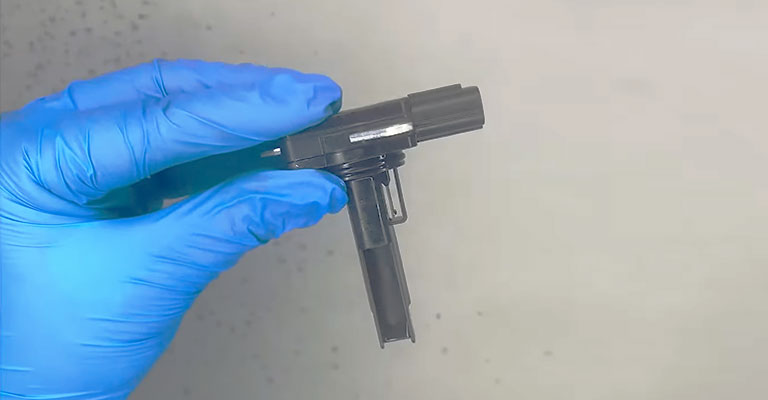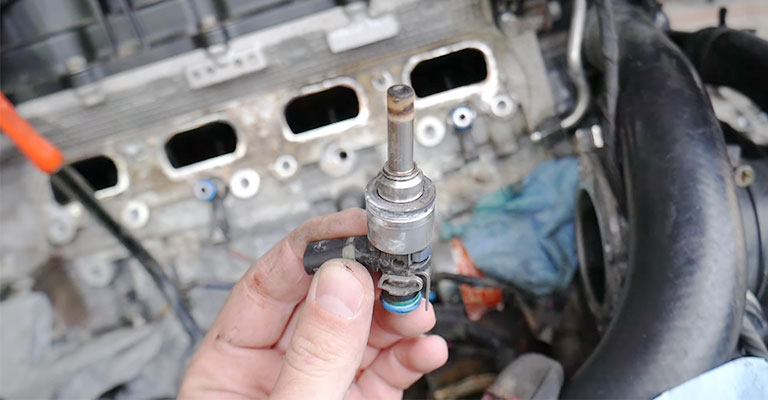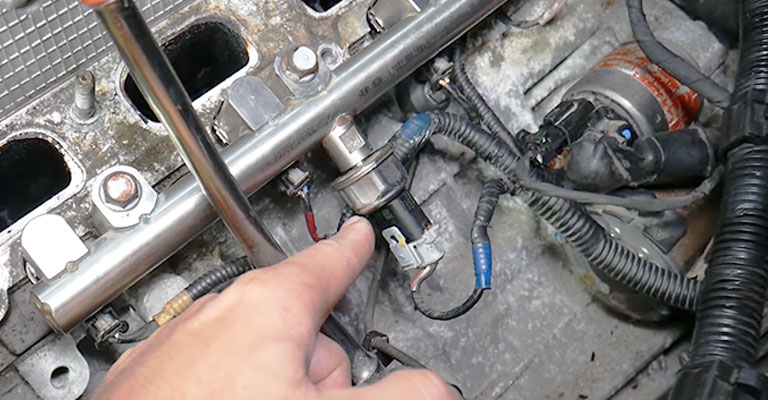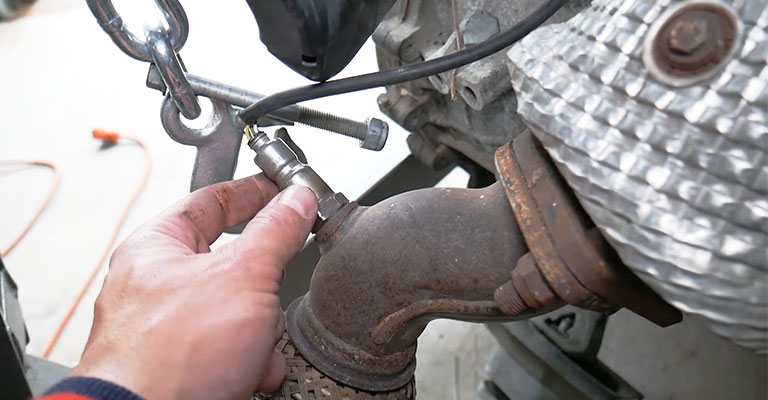In your Honda, the P0172 code means there is too much fuel or not enough air in Bank 1. Multiple reasons can trigger this code, and a mechanic must diagnose the specific cause so that you can fix the problem.
It may sound not very clear but let me explain. It is most efficient for combustion engines to maintain an air-fuel mixture ratio of 14.7 parts air to 1 part fuel. Lean engines set the P0171 and P0174 trouble codes due to too much air and too little fuel.
A check engine light for the P0172 code indicates that the engine is running rich because there is too much fuel and not enough air.
When there is a vacuum leak, more air is introduced into the air-fuel mixture, or if a fuel system is weak, insufficient fuel is injected into the mixture, which causes the rich condition.
To maintain the proper 14.7:1 ratio, the powertrain control module (PCM) reduces the amount of fuel added to the mixture to compensate for the rich condition. An error code P0172 is generated when these adjustments are too large.
P0172 Code Definition
The internal combustion process is driven by air and fuel. For the ignition to be successful, the appropriate amount of air and fuel must enter the combustion chamber.
When the ECU senses that the engine’s air-fuel mixture contains too much gasoline, P0172 is set as a trouble code. To maximize engine power and fuel economy, a proper air-fuel ratio of about 14.7:1 is essential.

In normal operation, the engine control unit (ECU) regulates the flow of air and fuel into the combustion chamber.
An engine’s ignition system controls how much fuel is injected into the combustion chamber and other internal functions.
The engine could receive too much fuel if the computer malfunctioned or if some other problem existed in the fuel injection system, causing it to receive more fuel than it needs to perform. This results in trouble code P0172 being thrown by the ECU.
What Is The Meaning Of Bank 1 In Error Code P0172 On A Honda?
The “Bank 1” portion of this code indicates that the issue is mainly with the #1 cylinder in the engine.
Four-cylinder inline engines have only one bank, so bank 1 is considered the only bank. Although an inline six-cylinder engine is an inline configuration, it may have two banks of three cylinders each.

What Does The P0172 Code Mean For Regular People?
In the exhaust gasses exiting the combustion chamber, P0172 indicates there is too much gasoline present.
ECUs monitor air-fuel ratios with various instruments, including mass air flow sensors (MAFs), oxygen sensors, and manifold absolute pressure sensors (MAPs).
Usually, an oxygen sensor measures the amount of oxygen and carbon monoxide present in exhaust gasses to determine the air-fuel ratio.
Currently, the best air-fuel ratio is 14.7:1. It was found that this ratio would produce the highest power output but consume the least fuel.
ECUs are capable of adjusting air-fuel ratios if they are too rich. If too large margins of compensation, a P0172 code will likely be displayed. When the engine’s air-fuel ratio is “rich,” it means there is too much gasoline and not enough oxygen present.
Why Does The P0172 Code Occur?
The P0172 code can be caused by many problems, just like any other OBD-II code. A fuel mixture problem can only be diagnosed by examining the components responsible for maintaining the correct fuel mixture.
Here are some possible causes of engine code P0172:

- Updates needed for the PCM, such as software issues
- Loose connections and damaged wiring can cause circuit problems
- Incorrect readings from other sensors (such as coolant temperature and mass airflow sensors)
- Leak in the exhaust system (oxygen can enter the exhaust stream upstream of the O2 sensor, which will cause the opposite code rather than a P0172 to appear)
- The O2 sensor is faulty (but O2 sensors tend to fail based on lean readings rather than rich readings).
- The catalytic converter, the exhaust pipe, and the muffler can become clogged due to buildup or damage
- There is a restriction somewhere in the air intake system
- The air filter is clogged
- The fuel tank was packed too tightly, resulting in a saturated carbon canister.
- A fuel pressure regulator that is faulty or there is a restriction in the fuel return line can result in excess fuel pressure
There is a leak in the fuel injector
The engine oil is contaminated (it has been too long since it was changed)
Common Symptoms Of The P0172 Code
When your engine runs on a rich mixture of fuel, it consumes more fuel. So in addition to an illuminated Check Engine (MIL) light, the ECM/PCM uses extraordinary measures to keep the fuel system balanced.
The symptoms can be mild to engine-damaging in extreme cases where another component has failed.
You are also at risk from unburned fuel reaching the exhaust lines, which can combust and damage parts like your catalytic converter. Look out for these symptoms if you want to avoid this type of headache:

- Fuel efficiency is poor
- In the cabin or in the exhaust, there is a strong odor of fuel
- A misfire
- During acceleration, there is a hesitation
- Rolling or rough idle
- A lack of power in the engine
- The check engine light is illuminated
How To Fix The Honda P0172 Code?
DTC P0172 can have so many causes that diagnosing and ultimately fixing the problem can be difficult. Therefore, choosing the simplest option is always recommended.
Work your way down from the easiest (and cheapest) possible causes by checking and cleaning your Mass Air Flow sensor and air filter.

A common misdiagnosis is assuming either the O2 sensor or the air/fuel sensor needs to be replaced.
How Much Does It Cost to Fix Code P0172?
Most shops will begin by spending an hour diagnosing your specific issue if you bring your car in for a diagnosis. A typical price range for this is $75-$150, depending on the labor rate at the shop.
The diagnosis fee will be applied to any repairs needed if you have the shop perform the repairs. If your P0172 code needs to be repaired, a shop can provide you with an accurate estimate.
If repairs are necessary to fix the underlying issue with the P0172 code, one or more of the following may be necessary.
In addition to the cost of the relevant parts and labor necessary to complete the repair, the estimated cost of each possible repair includes the cost of parts.
- A fuel or oxygen sensor costs between $200 and $300
- A fuel pressure regulator costs between $200 and $400
- $1300 – $1700 for a fuel pump
- $300 to replace the MAF
- $100 for a clean MAF
- $100-200 for vacuum leaks
Which Side Is Bank 1?
Bank 1 is always located on the side of the engine with cylinder 1. Bank 1 is usually the side of the engine with the lowest point.
Bank 1 is also the side on which the camshaft is located. The camshaft drives the intake valves, which open when the piston moves downward.
What Causes Bank 1 To Run Rich?
Mass air flow sensors can send false information about how much air enters an engine when they are dirty, which can cause the P0172 code.
When the mass air flow sensor is dirty, the sensor will detect less air entering the intake than is actually coming in, resulting in a rich condition.
Is P0172 Upstream Or Downstream?
The engine bank 1 “upstream” oxygen sensor triggers P0172, while the engine bank 2 “upstream” oxygen sensor triggers P0175.
A sensor that detects oxygen levels in the exhaust stream alerts your system if the condition is too rich, meaning there is too much fuel in the exhaust stream but not enough oxygen.
Can A Vacuum Leak Cause P0172?
The failure of an EVAP purge solenoid – a special case of a vacuum leak – can cause both rich and lean codes. As a result of fuel vapors sucked into the intake after refueling, a P0172/P0175 code will be triggered.
What Causes Fuel Mixture Too Rich?
Rich fuel mixtures have a higher air/fuel ratio than ideal for combustion, resulting in more fuel than is needed.
During the mixing process, either too much fuel or too little air will be introduced together. Various factors can cause obstructions, including improper adjustments, mechanical failures, or contaminants.
How Serious Is The P0172 Code?
Black smog can form in the exhaust if the air-fuel ratio is too rich, damaging the environment. In addition, due to the P0172 code setting the Check Engine Light, the car may not be able to pass a state vehicle inspection.
The Bottom Line
It depends on the exact cause of code P0172 and what can be done to fix it. For example, some components may only need to be cleaned, while others may need to be replaced.
In other words, there is no “magic bullet” fix for the problem. As outlined above, you’ll need to diagnose the code accurately before performing any repairs. In addition, all vehicles are different, so keep that in mind.
Even among Honda, there are different models. When troubleshooting and repairing OBD-II trouble codes, consult the factory repair information for your vehicle.

Good Evening, I have a 2019 Honda Accord with the 2.0T engine and has 60k miles. I am battling a check engine and the code is P0172, I have checked air leaks, changed Plugs, cleaned all MAPs and MAF, Used an Injector cleaner and Data stream of all sensors reading are within good range. The most intriguing thing is once the error is cleared it will be off but once the weather is becoming cool then the check engine Pops back.
Please with you years of experience what do you advice?
there are some other factors that could affect the fuel-air ratio, such as:
– The fuel pressure regulator, which controls the pressure of the fuel in the fuel rail and injectors. If it is faulty or leaking, it could cause too much fuel to enter the engine.
– The oxygen sensor, which measures the amount of oxygen in the exhaust and sends a signal to the engine computer to adjust the fuel injection. If it is dirty, damaged, or disconnected, it could send a false reading and make the engine run rich.
– The coolant temperature sensor, which monitors the temperature of the engine coolant and affects the fuel injection timing. If it is faulty or out of range, it could make the engine run rich when it is cold.
We suggest that you inspect and test these components to see if they are working properly. You can use a scan tool to monitor their data and compare them with the specifications in your owner’s manual or service manual. You can also use a multimeter to check their resistance and voltage.